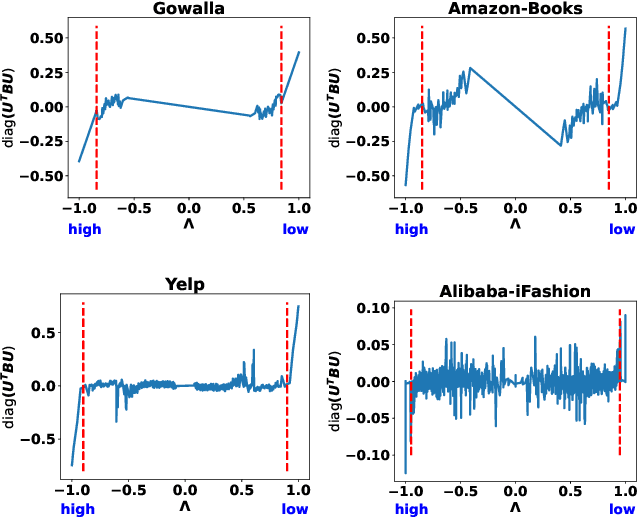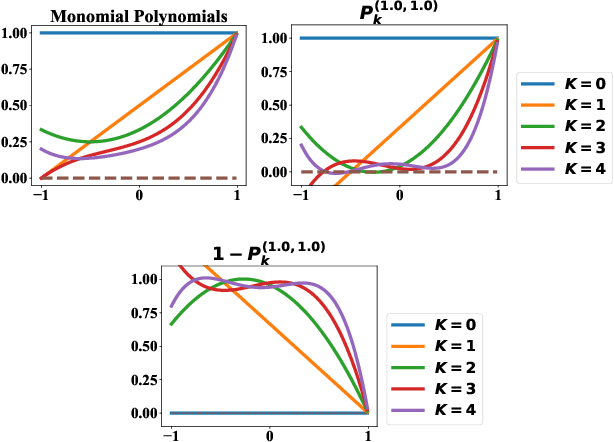Xiaojun Ma
GUI-360: A Comprehensive Dataset and Benchmark for Computer-Using Agents
Nov 06, 2025Abstract:We introduce GUI-360$^\circ$, a large-scale, comprehensive dataset and benchmark suite designed to advance computer-using agents (CUAs). CUAs present unique challenges and is constrained by three persistent gaps: a scarcity of real-world CUA tasks, the lack of automated collection-and-annotation pipelines for multi-modal trajectories, and the absence of a unified benchmark that jointly evaluates GUI grounding, screen parsing, and action prediction. GUI-360$^\circ$ addresses these gaps with an LLM-augmented, largely automated pipeline for query sourcing, environment-template construction, task instantiation, batched execution, and LLM-driven quality filtering. The released corpus contains over 1.2M executed action steps across thousands of trajectories in popular Windows office applications, and includes full-resolution screenshots, accessibility metadata when available, instantiated goals, intermediate reasoning traces, and both successful and failed action trajectories. The dataset supports three canonical tasks, GUI grounding, screen parsing, and action prediction, and a hybrid GUI+API action space that reflects modern agent designs. Benchmarking state-of-the-art vision--language models on GUI-360$^\circ$ reveals substantial out-of-the-box shortcomings in grounding and action prediction; supervised fine-tuning and reinforcement learning yield significant gains but do not close the gap to human-level reliability. We release GUI-360$^\circ$ and accompanying code to facilitate reproducible research and accelerate progress on robust desktop CUAs. The full dataset has been made public on https://huggingface.co/datasets/vyokky/GUI-360.
SheetBrain: A Neuro-Symbolic Agent for Accurate Reasoning over Complex and Large Spreadsheets
Oct 22, 2025Abstract:Understanding and reasoning over complex spreadsheets remain fundamental challenges for large language models (LLMs), which often struggle with accurately capturing the complex structure of tables and ensuring reasoning correctness. In this work, we propose SheetBrain, a neuro-symbolic dual workflow agent framework designed for accurate reasoning over tabular data, supporting both spreadsheet question answering and manipulation tasks. SheetBrain comprises three core modules: an understanding module, which produces a comprehensive overview of the spreadsheet - including sheet summary and query-based problem insight to guide reasoning; an execution module, which integrates a Python sandbox with preloaded table-processing libraries and an Excel helper toolkit for effective multi-turn reasoning; and a validation module, which verifies the correctness of reasoning and answers, triggering re-execution when necessary. We evaluate SheetBrain on multiple public tabular QA and manipulation benchmarks, and introduce SheetBench, a new benchmark targeting large, multi-table, and structurally complex spreadsheets. Experimental results show that SheetBrain significantly improves accuracy on both existing benchmarks and the more challenging scenarios presented in SheetBench. Our code is publicly available at https://github.com/microsoft/SheetBrain.
SheetDesigner: MLLM-Powered Spreadsheet Layout Generation with Rule-Based and Vision-Based Reflection
Sep 09, 2025Abstract:Spreadsheets are critical to data-centric tasks, with rich, structured layouts that enable efficient information transmission. Given the time and expertise required for manual spreadsheet layout design, there is an urgent need for automated solutions. However, existing automated layout models are ill-suited to spreadsheets, as they often (1) treat components as axis-aligned rectangles with continuous coordinates, overlooking the inherently discrete, grid-based structure of spreadsheets; and (2) neglect interrelated semantics, such as data dependencies and contextual links, unique to spreadsheets. In this paper, we first formalize the spreadsheet layout generation task, supported by a seven-criterion evaluation protocol and a dataset of 3,326 spreadsheets. We then introduce SheetDesigner, a zero-shot and training-free framework using Multimodal Large Language Models (MLLMs) that combines rule and vision reflection for component placement and content population. SheetDesigner outperforms five baselines by at least 22.6\%. We further find that through vision modality, MLLMs handle overlap and balance well but struggle with alignment, necessitates hybrid rule and visual reflection strategies. Our codes and data is available at Github.
Bingo: Boosting Efficient Reasoning of LLMs via Dynamic and Significance-based Reinforcement Learning
Jun 09, 2025Abstract:Large language models have demonstrated impressive reasoning capabilities, yet they often suffer from inefficiencies due to unnecessarily verbose or redundant outputs. While many works have explored reinforcement learning (RL) to enhance reasoning abilities, most primarily focus on improving accuracy, with limited attention to reasoning efficiency. Some existing approaches introduce direct length-based rewards to encourage brevity, but this often leads to noticeable drops in accuracy. In this paper, we propose Bingo, an RL framework that advances length-based reward design to boost efficient reasoning. Bingo incorporates two key mechanisms: a significance-aware length reward, which gradually guides the model to reduce only insignificant tokens, and a dynamic length reward, which initially encourages elaborate reasoning for hard questions but decays over time to improve overall efficiency. Experiments across multiple reasoning benchmarks show that Bingo improves both accuracy and efficiency. It outperforms the vanilla reward and several other length-based reward baselines in RL, achieving a favorable trade-off between accuracy and efficiency. These results underscore the potential of training LLMs explicitly for efficient reasoning.
Large Language Models for Predictive Analysis: How Far Are They?
May 22, 2025Abstract:Predictive analysis is a cornerstone of modern decision-making, with applications in various domains. Large Language Models (LLMs) have emerged as powerful tools in enabling nuanced, knowledge-intensive conversations, thus aiding in complex decision-making tasks. With the burgeoning expectation to harness LLMs for predictive analysis, there is an urgent need to systematically assess their capability in this domain. However, there is a lack of relevant evaluations in existing studies. To bridge this gap, we introduce the \textbf{PredictiQ} benchmark, which integrates 1130 sophisticated predictive analysis queries originating from 44 real-world datasets of 8 diverse fields. We design an evaluation protocol considering text analysis, code generation, and their alignment. Twelve renowned LLMs are evaluated, offering insights into their practical use in predictive analysis. Generally, we believe that existing LLMs still face considerable challenges in conducting predictive analysis. See \href{https://github.com/Cqkkkkkk/PredictiQ}{Github}.
Extract Information from Hybrid Long Documents Leveraging LLMs: A Framework and Dataset
Dec 28, 2024



Abstract:Large Language Models (LLMs) demonstrate exceptional performance in textual understanding and tabular reasoning tasks. However, their ability to comprehend and analyze hybrid text, containing textual and tabular data, remains unexplored. The hybrid text often appears in the form of hybrid long documents (HLDs), which far exceed the token limit of LLMs. Consequently, we apply an Automated Information Extraction framework (AIE) to enable LLMs to process the HLDs and carry out experiments to analyse four important aspects of information extraction from HLDs. Given the findings: 1) The effective way to select and summarize the useful part of a HLD. 2) An easy table serialization way is enough for LLMs to understand tables. 3) The naive AIE has adaptability in many complex scenarios. 4) The useful prompt engineering to enhance LLMs on HLDs. To address the issue of dataset scarcity in HLDs and support future work, we also propose the Financial Reports Numerical Extraction (FINE) dataset. The dataset and code are publicly available in the attachments.
Text2Analysis: A Benchmark of Table Question Answering with Advanced Data Analysis and Unclear Queries
Dec 21, 2023Abstract:Tabular data analysis is crucial in various fields, and large language models show promise in this area. However, current research mostly focuses on rudimentary tasks like Text2SQL and TableQA, neglecting advanced analysis like forecasting and chart generation. To address this gap, we developed the Text2Analysis benchmark, incorporating advanced analysis tasks that go beyond the SQL-compatible operations and require more in-depth analysis. We also develop five innovative and effective annotation methods, harnessing the capabilities of large language models to enhance data quality and quantity. Additionally, we include unclear queries that resemble real-world user questions to test how well models can understand and tackle such challenges. Finally, we collect 2249 query-result pairs with 347 tables. We evaluate five state-of-the-art models using three different metrics and the results show that our benchmark presents introduces considerable challenge in the field of tabular data analysis, paving the way for more advanced research opportunities.
On Manipulating Signals of User-Item Graph: A Jacobi Polynomial-based Graph Collaborative Filtering
Jun 06, 2023



Abstract:Collaborative filtering (CF) is an important research direction in recommender systems that aims to make recommendations given the information on user-item interactions. Graph CF has attracted more and more attention in recent years due to its effectiveness in leveraging high-order information in the user-item bipartite graph for better recommendations. Specifically, recent studies show the success of graph neural networks (GNN) for CF is attributed to its low-pass filtering effects. However, current researches lack a study of how different signal components contributes to recommendations, and how to design strategies to properly use them well. To this end, from the view of spectral transformation, we analyze the important factors that a graph filter should consider to achieve better performance. Based on the discoveries, we design JGCF, an efficient and effective method for CF based on Jacobi polynomial bases and frequency decomposition strategies. Extensive experiments on four widely used public datasets show the effectiveness and efficiency of the proposed methods, which brings at most 27.06% performance gain on Alibaba-iFashion. Besides, the experimental results also show that JGCF is better at handling sparse datasets, which shows potential in making recommendations for cold-start users.
Leveraging LLMs for KPIs Retrieval from Hybrid Long-Document: A Comprehensive Framework and Dataset
May 24, 2023Abstract:Large Language Models (LLMs) demonstrate exceptional performance in textual understanding and tabular reasoning tasks. However, their ability to comprehend and analyze hybrid text, containing textual and tabular data, remains underexplored. In this research, we specialize in harnessing the potential of LLMs to comprehend critical information from financial reports, which are hybrid long-documents. We propose an Automated Financial Information Extraction (AFIE) framework that enhances LLMs' ability to comprehend and extract information from financial reports. To evaluate AFIE, we develop a Financial Reports Numerical Extraction (FINE) dataset and conduct an extensive experimental analysis. Our framework is effectively validated on GPT-3.5 and GPT-4, yielding average accuracy increases of 53.94% and 33.77%, respectively, compared to a naive method. These results suggest that the AFIE framework offers accuracy for automated numerical extraction from complex, hybrid documents.
Hierarchical Transformer for Scalable Graph Learning
May 05, 2023Abstract:Graph Transformer is gaining increasing attention in the field of machine learning and has demonstrated state-of-the-art performance on benchmarks for graph representation learning. However, as current implementations of Graph Transformer primarily focus on learning representations of small-scale graphs, the quadratic complexity of the global self-attention mechanism presents a challenge for full-batch training when applied to larger graphs. Additionally, conventional sampling-based methods fail to capture necessary high-level contextual information, resulting in a significant loss of performance. In this paper, we introduce the Hierarchical Scalable Graph Transformer (HSGT) as a solution to these challenges. HSGT successfully scales the Transformer architecture to node representation learning tasks on large-scale graphs, while maintaining high performance. By utilizing graph hierarchies constructed through coarsening techniques, HSGT efficiently updates and stores multi-scale information in node embeddings at different levels. Together with sampling-based training methods, HSGT effectively captures and aggregates multi-level information on the hierarchical graph using only Transformer blocks. Empirical evaluations demonstrate that HSGT achieves state-of-the-art performance on large-scale benchmarks with graphs containing millions of nodes with high efficiency.
 Add to Chrome
Add to Chrome Add to Firefox
Add to Firefox Add to Edge
Add to Edge